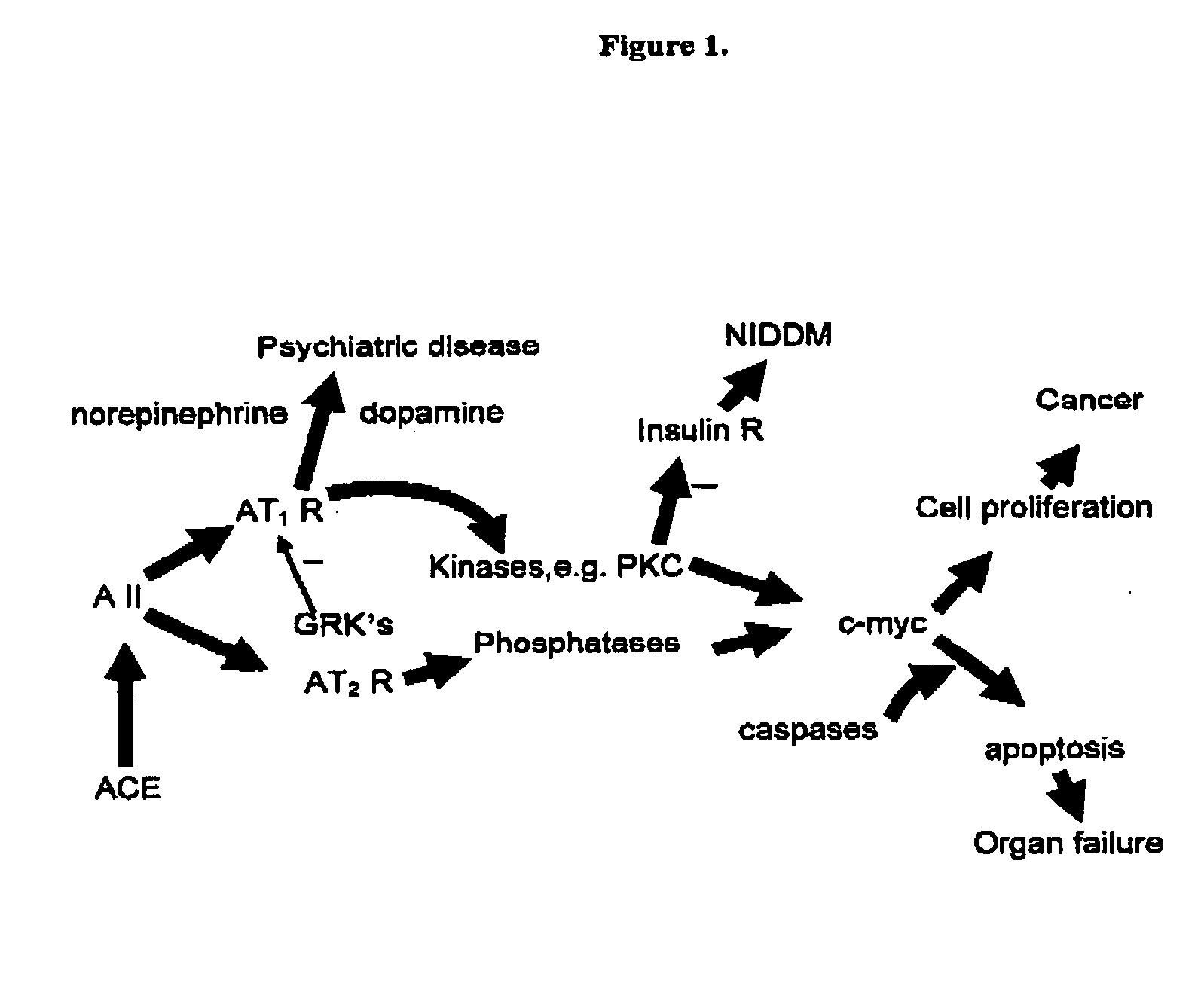Methods and compositions for treating diseases associated with excesses in ACE
a technology of excess ace and composition, applied in the field of chronic disease treatment, can solve the problems of difficult to say exactly which of the seventeen reported polymorphisms is functional, and the prognosis of moderate-to-severe heart failure remains poor
- Summary
- Abstract
- Description
- Claims
- Application Information
AI Technical Summary
Benefits of technology
Problems solved by technology
Method used
Image
Examples
example 1
Calculation of Benefit of Increased ACE Inhibitor Dosages
[0245] Observational studies have indicated dramatically improved patient outcomes when treating a subset of these diseases with an increased dose of a hydrophobic ACE inhibitor (ACE INHIBITOR) such as quinapril 2 mg / kg / day(*), or ramipril(″), in particular, ESRD / HTN, ERSD / NIDDM, ASPVD, and COPD.
[0246] The following are the expected difference in outcomes:
[0247] Outcomes data for patients with CRF due to hypertension, determined as Time to Dialysis, for patients with serum creatinine of at least 2 mg / dl at the first clinic visit:
Caucasian men:Conventional Rx (Quinaprol 4.3 yrQuinapril >80 mg / d +Florinef17.4 yrAfrican American men:Conventional Rx (Quinapril 3.6 yrQuinapril >80 mg / d +Florinef14.8 yr
[0248] The following are the expected differences in outcomes for patients with CRF due to NIDDM, determined as Time to Dialysis, for patients with serum creatinine of at least 2 mg / dl at the first clinic visit:
Caucasian men:...
example 2
Actual Outcomes for Two Patients with ASPVD Treated with High Dose ACE Inhibitor
[0251] A 74 year old white male and a 73 year old black male, both heavy smokers with HTN, severe ASPVD. They were seen because serum creatinine was approximately 3 on the day of scheduled femoral-popliteal revascularization.
[0252] They were begun on Quinapril 2 mg / kg / d in addition to vigorous blood pressure and lipid lowering; surgery canceled.
[0253] Revascularization was delayed four to five years in both cases.
example 3
Actual Outcome for Patient with COPD
[0254] A 65 year old white male with end-stage COPD, FEV1 0.87 L, on 2 L / min oxygen, 1 ppd, first seen with BP 104 / 60, 4+edema despite Lasix 40 mg qd, ie severe R-sided failure.
[0255] He was begun on ramipril 2.5 mg / d 10 / 95 as outpatient. Two weeks later he had BP 180 / 110; currently on 600 mg / d ramipril with BP 135 / 80. Still smoking ½ to 1 package of cigarettes per day. No other changes in medications. FEV1 0.83 (8 / 99), 25 lb. non-fluid wt. Gain. Developed CHF with Amlodipine added for BP control; responded to increased dose of Lasix. Hospitalized for CHF but not for COPD in a period of over five years.
PUM
| Property | Measurement | Unit |
|---|---|---|
| concentrations | aaaaa | aaaaa |
| blood pressure | aaaaa | aaaaa |
| blood pressure | aaaaa | aaaaa |
Abstract
Description
Claims
Application Information
 Login to View More
Login to View More - R&D
- Intellectual Property
- Life Sciences
- Materials
- Tech Scout
- Unparalleled Data Quality
- Higher Quality Content
- 60% Fewer Hallucinations
Browse by: Latest US Patents, China's latest patents, Technical Efficacy Thesaurus, Application Domain, Technology Topic, Popular Technical Reports.
© 2025 PatSnap. All rights reserved.Legal|Privacy policy|Modern Slavery Act Transparency Statement|Sitemap|About US| Contact US: help@patsnap.com



